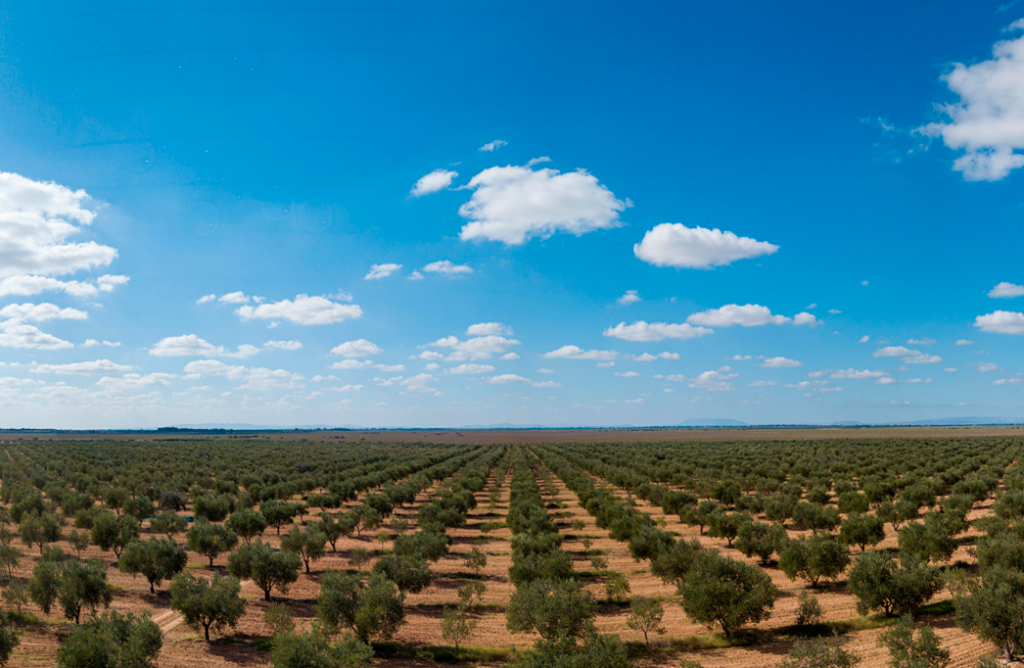The Essence of Tunisian Olive Harvest: Timing and Quality
🗓 06.11.23

At this time of year, Tunisian olive growers prepare for the olive harvest season, a crucial period for the production of high-quality extra virgin olive oil.
However, it’s not just about looking at the calendar to determine the optimal time for harvesting. In Tunisia, as in other Mediterranean regions, several factors come into play in determining the ideal time to pick olives.
In this blog, we will delve into the key elements that influence the quality of Tunisian extra virgin olive oil: timing, olive variety, and the microclimate of each region.
Timing: The Secret of Ripeness
The timing of the olive harvest in Tunisia is a well-guarded secret of producing exquisite extra virgin olive oil. As autumn approaches, olives go through a fascinating metamorphosis, shifting from various shades of green to a lustrous, deep black, a clear sign of their ripeness.
Tunisian olives are notably unique in their display of maturity, showcasing both green and black sides on the same fruit to signify ripeness.
However, it’s essential to recognize that the timeline for this transformation is not a simple, fixed schedule.
In Tunisia, the olive harvest season typically begins in September and often extends into January or February. However, the precise timing can vary from one year to the next due to several factors.
Producers must carefully monitor olive ripeness and oil content. For top-quality extra virgin olive oil, timing is essential. An early harvest in October, though less productive, yields oil with exceptional flavor. However, if the priority is a more abundant production, the harvest can extend into December.
Olive Variety: The Choice That Makes a Difference
Tunisia is home to a wide variety of olive cultivars, each bringing its distinctive characteristics. The choice of olive variety depends on the producer’s goals. Some varieties are ideal for olive oil with fruity aromas, while others are better suited for robust-tasting oils. Choosing the right olive variety is important for achieving the desired extra virgin quality.
Tunisia boasts around 36 olive cultivars, such as Chetoui, Chemlali, Zarrazi, Toffahi, Meski, Gerboui etc, each with unique characteristics. These varieties offer diverse flavors, from delicate and fruity to robust and spicy, allowing for a wide range of olive oil choices.
Microclimate: Local Influence
The influence of the microclimate in Tunisia adds another layer of complexity to its olive oil production. Each region, characterized by its unique climate, weather conditions, altitude, and soil composition, contributes distinctive flavors and attributes to the olive oils produced there.
Coastal olive groves, with their mild and often temperate maritime climate, yield olive oils known for their delicate and slightly fruity notes. In contrast, olive groves located in the elevated mountainous regions benefit from the cooler temperatures, contributing to olive oils with more robust and spicy profiles.
Moreover, regions experiencing specific climatic conditions, such as warm and arid desert areas, also influence the olives’ maturation and, consequently, the oil’s flavors.
The olive harvest season in Tunisia is a multifaceted process marked by timing, olive variety, and the microclimate of each region. Olive growers strive to produce exceptional extra virgin olive oil. Tunisia, renowned for its quality olive oil, remains committed to maintaining this reputation. The significance of these factors, coupled with the dedication of producers, is reflected in every bottle of Tunisian extra virgin olive oil.
Note: To learn more about our harvesting process and explore our range of OLYFO’s oils, visit our Social Media Accounts .
We invite you to join us in our quest for excellence and to discover the unique flavor of our EVOO.
For any inquiries or further information about our EVOO and our offerings, please feel free to contact our co-founder, Ahmed Hamza via email at sales@localhost or on WhatsApp at +216 25 217 199

